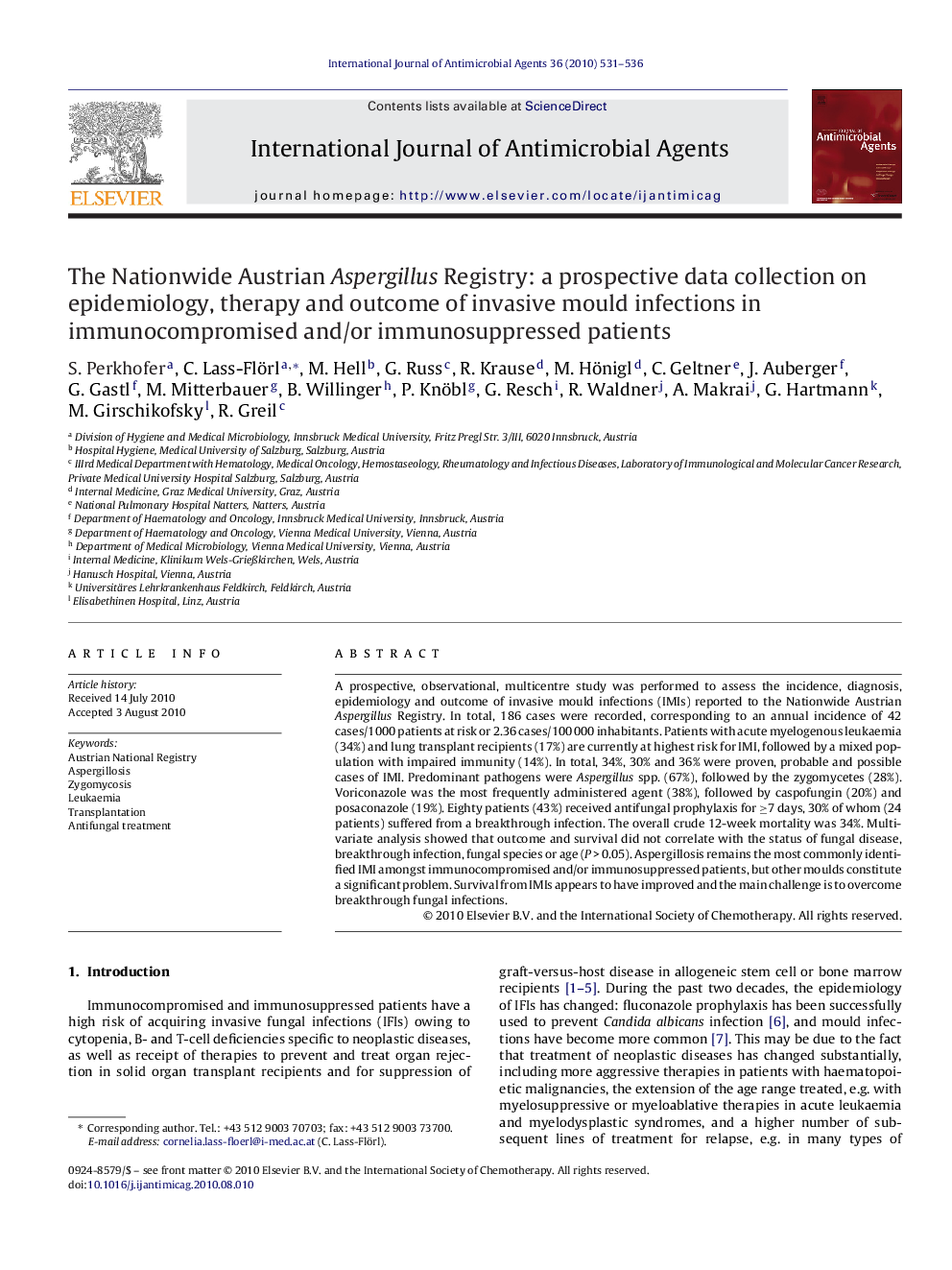| Article ID | Journal | Published Year | Pages | File Type |
|---|---|---|---|---|
| 3360055 | International Journal of Antimicrobial Agents | 2010 | 6 Pages |
A prospective, observational, multicentre study was performed to assess the incidence, diagnosis, epidemiology and outcome of invasive mould infections (IMIs) reported to the Nationwide Austrian Aspergillus Registry. In total, 186 cases were recorded, corresponding to an annual incidence of 42 cases/1000 patients at risk or 2.36 cases/100 000 inhabitants. Patients with acute myelogenous leukaemia (34%) and lung transplant recipients (17%) are currently at highest risk for IMI, followed by a mixed population with impaired immunity (14%). In total, 34%, 30% and 36% were proven, probable and possible cases of IMI. Predominant pathogens were Aspergillus spp. (67%), followed by the zygomycetes (28%). Voriconazole was the most frequently administered agent (38%), followed by caspofungin (20%) and posaconazole (19%). Eighty patients (43%) received antifungal prophylaxis for ≥7 days, 30% of whom (24 patients) suffered from a breakthrough infection. The overall crude 12-week mortality was 34%. Multivariate analysis showed that outcome and survival did not correlate with the status of fungal disease, breakthrough infection, fungal species or age (P > 0.05). Aspergillosis remains the most commonly identified IMI amongst immunocompromised and/or immunosuppressed patients, but other moulds constitute a significant problem. Survival from IMIs appears to have improved and the main challenge is to overcome breakthrough fungal infections.
